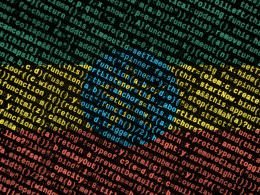Blockchain governance, in its decentralized application, consists of two parts: “social governance”, i.e. the governance and incentive model, and “algorithmic governance administration”, an electronic code that manages the model with smart contracts.
If you want to understand what a DAO is, you can read my previous article: “Decentralized Autonomous Organization (DAO): The Brief History, Challenges, and Lessons Learned”.
In an autonomous configuration, tokenized incentives are the core of the economic coordination game that forms the protocol.
Governance structures have centuries of evolution, and there are different applicable models. Blockchain networks have only existed for 12 years, and the first electronic programming of autonomous and decentralized governance was The DAO, only 5 years ago.
Blockchain technology, with its short history, faces great challenges for algorithmic management of governance systems, with conditions that change over time, human error, or information asymmetries in complex multi-stakeholder environments.
This social governance, with an iterative process of algorithms, can be carried out both “off-chain” and “on-chain”.
Off-chain and On-chain Governance
Early blockchain protocols, such as Bitcoin and Ethereum, have a rather spontaneous and not very institutionalized social consensus process, which occurs off-chain, where decisions on protocol changes are consensual among developers, and approved by miners to be implemented, and all this in an informal way, without blockchain network methods.
In the off-chain governance of traditional models, any developer can submit a proposal for improvement to the community, so-called pull requests.
Several more recent blockchain projects have introduced alternative proposals on how to mitigate these process deficiencies with various on-chain governance models, in which decisions are at least partially regulated and implemented at the protocol level.
On-chain governance refers to mechanisms to allow developers to disseminate their improvement proposal on the chain, to be voted on, and after approval it is deployed on the testnet for a certain time, after which the proposal will be voted on again and, if necessary, deployed on the mainnet.
On-chain governance solutions can increase coordination and fairness, but they are also risky, as they are more difficult to change once instituted, and could be more easily exploited.
Off-chain governance, on the other hand, is relatively centralized, excluding many small token holders, especially those who lack the technical expertise to properly evaluate network decisions.
Presumably, a certain degree of on-chain coordination facilitates overall coordination, but it does not solve the human factor. The on-chain and off-chain models have advantages and disadvantages, and the suitability of one of them will depend on the scalability of the blockchain, the governance model and the ecosystem in which it is employed. A combination of both approaches may be suitable for solving the decision-making process.
The case of project Catalyst, in Cardano, is an off-chain voting model, but hybrid from the governance if we compare it with current models, since participation is open to any token holder with a minimum of funds, even if they do not have technical capabilities as a developer.
Use Cases
DAO governance can be implemented for any structure that needs to be governed, where there is decision making. Therefore, there are no limits to the use of DAOs.
But why use a DAO structure? Transparency of decisions, cost efficiency to operate and the creation of organizations are its main advantages, and with greater utility for those organizations that do not require hierarchization, decentralizing decisions.
There are many scenarios to illustrate how a DAO could be used. I will take a simple example to illustrate the application, a neighborhood association.
In this type of traditional organization, each family pays dues, which are used to meet expenses for different breakdowns and improvements in the community.
Using the structure of a DAO, participants have votes through their governance tokens, with some having more, and more voting power, according to the association’s bylaws and residency conditions. Then, with spending tokens and smart contracts, all the neighbors deposit the funds. These funds will not be in the hands of a single person, but in the blockchain, in a transparent and auditable way. The smart contract would have them locked up pending democratic decision-making.
For each new expense (repair or improvement, for example) a request would be generated, with the different budgets presented by suppliers. The neighbors will be able to decide, during a determined period of time in a democratic way, the budget they are interested in, unblocking the funds to the one with the highest vote.
In this model there is the figure of the administrator, who is only allowed to generate the voting proposals, but the management of the funds is defined in the contract protocol, according to the approval of the participants’ expenses.
The most important use case would be the one applied to the government of a country.
Democracy has centuries of history, and its birth in ancient Greece. The indirect or representative model is structured on the separation of powers, which is the cornerstone of our modern democracies, and is a form of decentralization.
Why not bring the model of democracy to the DAOs. It is proven, and it can be improved.
The “liquid democracy” model would be a reality with DAOs. It is a form of democracy with permanent participation, which includes the possibility of instant revocable proxy voting, hence the concept of liquidity.
For the legislative case, the citizen has the possibility to vote on the proposals of the representatives, to validate or reject them, before they are dealt with in the body of representatives, and even to present their own proposals to be promoted by the representatives. All with transparency of vote, even maintaining the legal secrecy.
This model mitigates cases of corruption, and empowers citizens, who can reject laws that their own elected representatives push, contrary to their campaign promises.
Governance models
It is not possible to describe all governance models, because not all of them have been invented yet. The models and their variants are infinite. But I will tell you a few.
Token-based Voting
The most widely used voting method, based on the amount of tokens held by each user, known as voting power, verifies users’ token balances and then creates on-chain or off-chain signaling votes. This model is the one used in Project Catalyst, in Cardano. The Sybil attack in DAOs, refers to single voter voting with multiple identities, an issue that occurs in anonymous or pseudo-anonymous blockchains, that is why token-based voting is an efficient way to be resilient to these attacks, since crypto assets cannot be created at will. However, token-based voting is criticized for favoring plutocracy, where voting power can be concentrated in a few voters, with adverse effects on decentralization.
Preferential Voting
Preferential Voting also known as ranked-choice voting, voters use their ranked-choice voting to select alternatives to be voted on. Some variants on this methodology require voters to rank all proposals, others limit the number they can rank, and still others allow voters to rank as many as they see fit, grouping the rest at the end. This method is useful for choosing from a large number and diversity of projects, sorting them by preference.
Budget-Box
Proposals are voted on the basis of the money allocated to each project. The more money provided, the more choice there is, and if a project is considered over-budget, funding can be reduced. This method is useful for voting on development projects.
Conviction Voting
Funds proposals based on the preferences of community members, expressed on a rolling basis, i.e. voters state their preference rather than casting their votes in a single time-limited session. A member can change his preference at any time, but the longer he maintains his preference for the same proposal, the “stronger” his conviction is. Conviction voting prevents Sybil attacks, and provides resistance to collusion.
Minimum Anti-Collusion Infrastructure (MACI)
Originally proposed by Vitalik Buterin, systems built with MACI make collusion between participants more difficult, while retaining censorship resistance and the benefits of correct execution of smart contracts. Whitelist voters named Alice, Bob, and Charlie register to vote by sending their public key to a smart contract. In addition, there is a central coordinator, Dave, whose public key is known to all. When Alice casts her vote, she signs her vote with her private key, encrypts her signature with Dave’s public key, and sends the result to the smart contract. Each voter can change her key pair at any time. To do so, he creates and signs a key change command, encrypts it and sends it to the smart contract. This makes it impossible for a briber to be sure that his bribe has any effect on the bribee’s vote. If Bob, for example, bribes Alice to vote a certain way, Alice can simply use the first public key she had recorded – which is now null – to cast a vote. Since such a vote is encrypted, as is the key change message Alice had previously sent to Dave, Bob has no way of knowing whether Alice has actually voted as he intended. Even if Alice reveals the clear text of her vote to Bob, she need only not show him the updated key command she previously used to invalidate that key. In short, as long as she has sent a single encrypted command before her vote, there is no way to know whether that vote is valid or not.
Quadratic Voting
Voters assign votes to express the degree of their preferences, rather than just the direction of their preferences, allowing users to “pay” for additional votes on a given issue to express their support for certain issues more strongly. Payment for votes is done with governance tokens. Quadratic voting is based on market principles, where each voter receives a budget of voting credits that they have the decision, and personal delegation to spend to influence the outcome of a series of decisions. If a participant has strong support for or against a specific decision, additional votes can be allocated to proportionally demonstrate the voter’s support. A vote pricing rule determines the cost of the additional votes, with each vote becoming more and more expensive, and thus demonstrating an individual’s support towards the particular decision. The simplified formula for how quadratic voting works is: cost to the voter = (number of votes)2. The quadratic nature suggests a more efficient form of voting, spreading the choice among many issues. Quadratic voting is also a way to limit the plutocratic effects of token-based voting, while giving people with more clout in the game a way to signal their preferences. Gitcoin has experimented with it successfully for crowdfunding campaigns.










